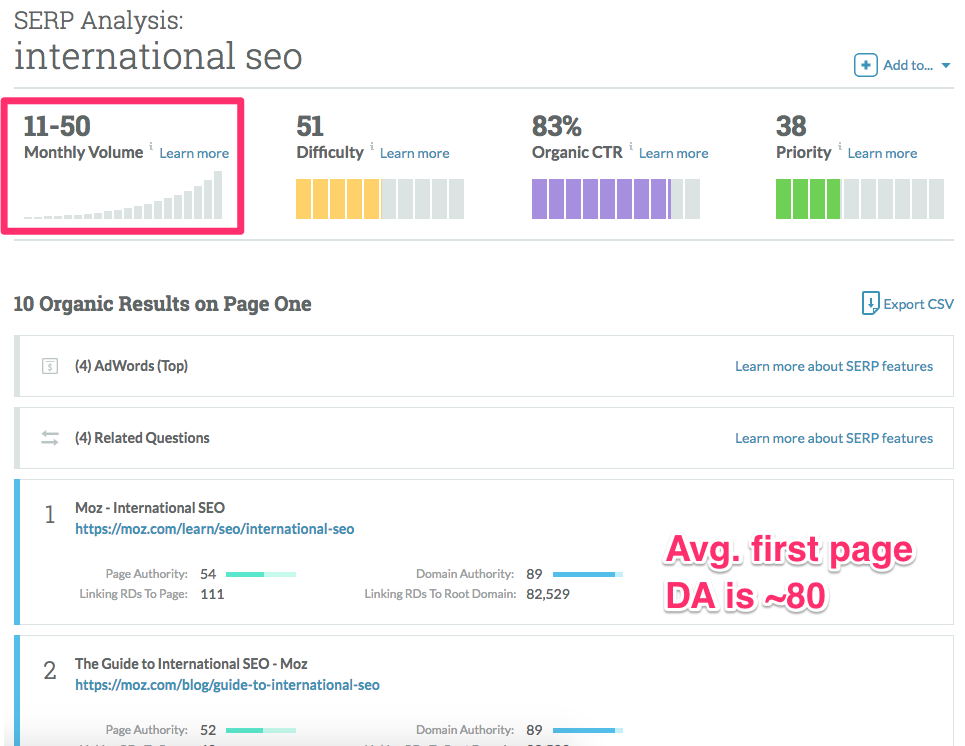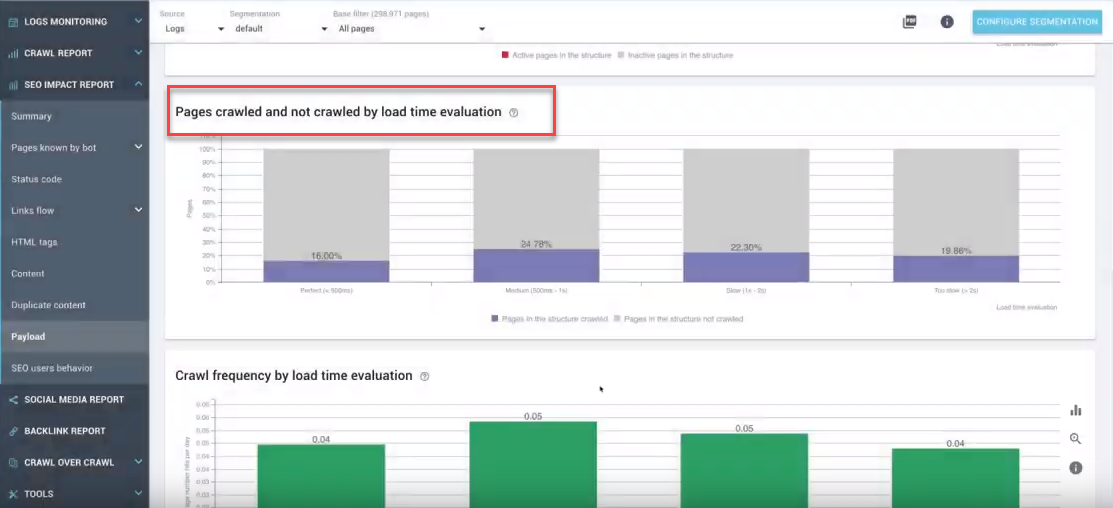Google processes nearly four billion keyword searches per day.
That’s an astonishing number, and it presents an amazing potential for businesses to capitalize on.
But finding keywords that are valuable, profitable, and easy to rank for is no easy feat.
Keywords are more competitive than ever. Four million blog posts are published daily, making it harder and harder to find keywords that aren’t ultra-saturated.
You could literally spend hours on a keyword research tool just to find a few mediocre keywords to target.
And capitalizing on existing keywords you target is a shot in the dark. Which do you prioritize?
In this guide, I’ll walk you through what valuable keywords are and how to find them on your client’s site in five minutes.
What is a Valuable Keyword?
Most medium-size companies will spend $5,000 – $25,000 to get their websites built, but these websites won’t have any value unless people find them.
Value is different for every single business. But in the end, value boils down to a few key factors:
- Revenue
- ROI
- Brand development
Without these three factors, you can’t have a sustainable company that continues to grow.
Without revenue, there is no profit and no return on investment.
Without brand awareness generated from searches, you’ll struggle to rank for high-value keywords in the future.
In terms of specific metrics, let’s look at a few keywords and explore their potential value.
One of the best examples of low-value keywords I’ve seen is:

Before I dissect this, ask yourself: is this a valuable keyword? From a business perspective, this is not a very valuable keyword.
Why?
The metrics and existing SERP results are not in your favor. Let me break it down:
Monthly volume: with just 11-50 searches per month, this is a low volume keyword, especially for one that isn’t long-tail / highly specific.
Difficulty / existing SERP rankings: with a 51 difficulty, you’ll need an already high domain authority to compete. Even if you had an 80 DA, you’d still be competing against big hitters like Moz who already have incredible brand awareness for all SEO head terms.
Organic CTR: at 83% this is a good start. The higher the organic CTR the better. But when comparing the rest of the metrics, there isn’t much value here.
Intent: This term signifies someone is likely newer to the subject, looking for basic information. They aren’t ready to convert, and they probably won’t even convert on a lead magnet yet, so you’ll likely have to spend money to remarket them. This can be good for brand awareness goals, but not for direct sales. This requires playing the long game, but for such little traffic, the potential upside is very low.
If your client was targeting this keyword, it should be marked as low value.
Now, let’s take a look at a valuable keyword on starting a podcast:

The difficulty for this keyword is low, with DA 50 sites dominating the SERPs. That’s not a very high authority, and estimates require only 15 backlinks to a post targeting this keyword to rank in the top 10. That’s a very realistic goal that can be achieved in as little as 30 days.
The search volume is also very high, at 3.3k searches per month, 97% of those being organic clicks.
Simply put, this keyword is valuable because of it’s high volume, low difficulty, and organic click potential.
When analyzing whether a keyword is valuable or not, keep the following factors in mind:
- Volume: how much traffic your client is currently getting from a keyword and what the potential traffic is if they rank higher.
- Difficulty: are the SERPs already stacked with big sites? Dominated SERPs requires your client to spend more time and money to build that page via links, potentially lowering their ROI and overall keyword value.
- Organic CTR: low organic CTRs mean that traffic funnels into ads, not your client’s organic page.
- Intent: is this a high-intent keyword where people will buy from your client? Align this with their goals.
Step 1. Analyze Your Client’s Site With Oncrawl
To get started analyzing your client’s most valuable keywords, run their site through an Oncrawl report.
In the SEO visits report, you can find specific pages, and therefore keywords, that drive the most organic traffic for your clients.
Here you should be looking at ALL FACETS of a client site. That means blog posts, their knowledge base articles, and any SEO-driven page that brings in traffic.
This is a fantastic starting point to start digging into specific keywords that have potentially high values:

Make a list of the pages and subsequent keywords that are driving tons of traffic for your client.
But don’t ignore the less popular keywords, either. There may be keywords here that are potentially more valuable.
For example, you can also analyze SEO visits by word count as a metric for valuable keywords:

This table shows you how well your clients’ pages perform based on word count. For instance, if your client is already ranking on the top page and drives high SEO traffic from a given keyword, can you increase the word count to improve rankings?
If so, that’s a highly valuable, easy to improve keyword.
So while your client might not reap tons of SEO traffic from a given keyword just yet, the value is still there in potential traffic.
Find low-hanging fruit keywords to optimize for increased value by looking at load-time, too.

If page speeds are low, your client could be losing traffic, making a given keyword appear less valuable than it should be.
Once you have generated a list of good keywords based on SEO traffic for your clients, it’s time to cross-reference them with tools like Ahrefs, SpyFu, and SEMRush.
Step 2. Cross-Reference Data With Ahrefs, SpyFu, and SEMRush
Taking your list of valuable pages and keywords from the Oncrawl report, start plugging them into Ahrefs:

Look at the metrics we discussed in the first section. The goal here is to analyze the top keywords that were driving SEO traffic for your clients to see:
- Volume: how much traffic potential does this keyword have compared to the SEO traffic they currently get? If current traffic or current traffic and potential are high, this is a valuable keyword.
- Difficulty: what do the SERPs look like? Will it be easy to rank better?
- Organic CTR: how many clicks go to organic pages? If it’s high, this is a valuable keyword.
- Intent: Does this keyword drive conversions for them?
- Current client rankings: Does your client rank high? That’s fantastic and this can be a valuable term. Even if they don’t rank high, is there potential based on SEO keyword difficulty and volume?
Start to weed out keywords that aren’t driving traffic and conversions for your client.
Your final list should be a combination of keywords that drive good SEO traffic already and ones that have serious potential!
Cross reference this with SEMRush SEO Content Template to see what improvements you can make to a post and the potential ranking impact that would have:

Lastly, you will want to see what your client competitors are ranking for terms, too. If your client is outranking a competitor, the keyword becomes more valuable. Conversely, if your client is far behind in rankings, it could be a fool’s errand.
Using SpyFu, drop your client into the search bar and look for their top competitors:

Click on each and analyze their keywords to spot similar targets.
Compare these to your client’s rankings, backlinks, and domain authority.
In the end, you should have a large list of keywords that are valuable in different ways, both currently valuable for traffic and ROI, and potentially valuable down the road.
Conclusion
With billions of searches made daily on Google alone, and millions of people targeting them with blog posts, it’s harder than ever to find valuable keywords.
You can spend hours doing organic research to build a tiny list. Even worse, it’s hard to prioritize your existing efforts because of it.
Due to competition, you need to be smarter than ever when investing more money into specific keywords.
Invest in the wrong keywords and you’ll spend thousands for little returns on investment.
But invest in the right ones and your revenue can skyrocket.
Use this five-minute guide to find your client’s most valuable terms and then help them capitalize on it.

